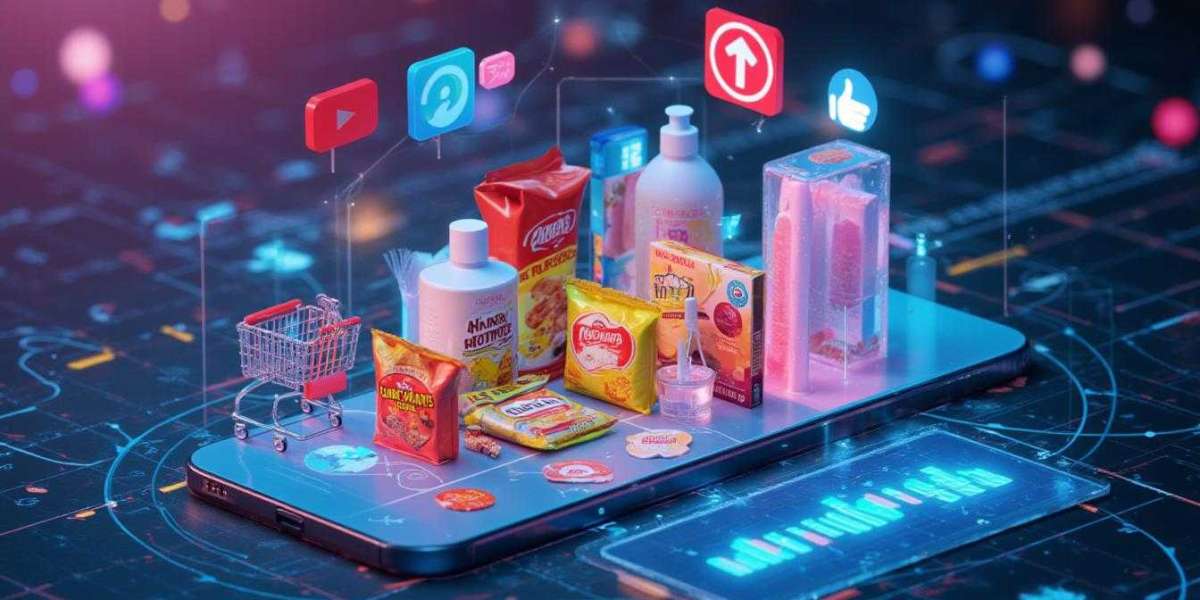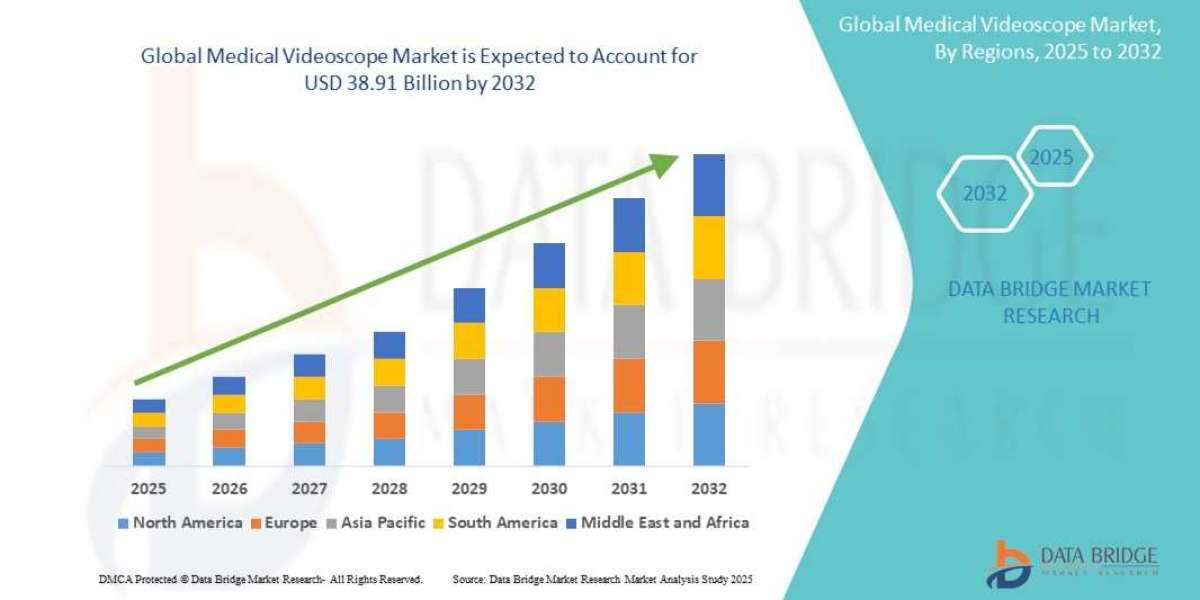Introduction
The fast-moving consumer goods (FMCG) sector thrives on quick decisions, impulse buying, and strong consumer connections. In today’s digital-first era, these connections are increasingly built online, where attention spans are shrinking, and visual content dominates. Among all digital content formats, video marketing and short-form reels have emerged as game-changers.
For FMCG brands, which rely on mass visibility and frequent engagement, investing in video marketing and reels is no longer optional—it’s essential. This blog explores why video content is a must-have strategy, how it fuels consumer loyalty, and why brands that hesitate risk being left behind.
1. The Evolution of FMCG Marketing in the Digital Age
Traditionally, FMCG marketing leaned heavily on television commercials, print advertisements, and point-of-sale displays. While effective for decades, these channels have limitations in today’s digital world.
Consumers now spend more time scrolling through social platforms than watching TV. With the rise of Digital Marketing for FMCG, brands have had to pivot from static visuals and long ads to short, impactful, and interactive videos that resonate instantly.
Reels, YouTube Shorts, TikToks, and Instagram stories are modern billboards. They’re not just content—they’re conversations between brands and consumers.
2. Why Video Marketing Resonates with FMCG Consumers
a) Emotional Storytelling
FMCG products are everyday essentials—snacks, beverages, toiletries, cosmetics. Consumers rarely think twice before purchasing them. Video marketing helps transform these simple commodities into lifestyle choices by attaching emotional value.
b) Visual Appeal
A well-shot reel of a chilled soda bottle being opened on a hot summer day can trigger instant cravings. Unlike static images, videos ignite multiple senses—sight, sound, and imagination.
c) Short-Form Attention Span
With average human attention spans shrinking to 8 seconds, reels and short videos capture interest quickly and deliver impactful messages in seconds.
3. The Power of Reels for FMCG Brands
Reels have exploded as a content format due to their algorithm-friendly nature. Instagram, Facebook, and YouTube prioritize short-form videos, giving brands organic visibility without huge ad spends.
Virality Potential – A single creative reel can get millions of views overnight.
Engagement Magnet – Reels receive higher likes, shares, and comments compared to static posts.
Low Production Barrier – Unlike TV ads, reels can be shot using smartphones and edited quickly.
Example: Lay’s uses reels with influencers to show creative snack recipes, while Dove creates short reels promoting self-love campaigns.
4. How Video Marketing Boosts FMCG Sales
a) Influencing Purchase Decisions
Studies reveal that 84% of people say a brand’s video has convinced them to buy a product. FMCG thrives on impulse buying, and reels create that spark.
b) Demonstrating Usage
Videos show how a product fits into daily routines—how to use, when to use, and why it’s beneficial. For FMCG products like instant noodles, detergent, or skincare, reels provide a quick showcase of effectiveness.
c) Driving E-Commerce Integration
Most FMCG brands now integrate clickable links into reels. A simple “Shop Now” button leads directly to an e-commerce checkout, shortening the sales funnel.
5. Building Brand Loyalty with Reels
FMCG products are interchangeable, and consumers often switch brands based on offers. Loyalty is built when brands emotionally connect with customers, and video is the perfect tool.
Behind-the-scenes reels create trust.
Educational content (how-to-use tips, health benefits) establishes authority.
User-generated reels boost credibility and community building.
6. The Role of Influencers in FMCG Video Marketing
Collaborating with micro and macro-influencers gives FMCG brands authenticity. Audiences trust influencers more than traditional ads.
Example: Nestlé works with food bloggers who share snack recipes using Maggi noodles, creating relatable, sharable reels.
7. Measuring ROI from Video Marketing in FMCG
Unlike traditional ads, digital video campaigns are measurable. FMCG brands can track:
Views Reach – How many people watched the video.
Engagement – Likes, comments, shares, saves.
Conversions – Click-throughs to e-commerce pages.
Brand Recall – Post-campaign surveys and organic mentions.
8. Case Studies: FMCG Brands Winning with Reels
Coca-Cola – Leveraging reels with music trends to stay culturally relevant.
Colgate – Creating reels about dental hygiene awareness with quick tips.
Pepsi – Running reel challenges with dance/music collaborations.
9. Challenges FMCG Brands Face with Video Marketing
High Content Demand – Reels need frequent posting.
Creative Fatigue – Staying innovative is tough.
Algorithm Dependence – Reach depends on social platform rules.
Data Privacy – Targeting restrictions limit ads.
Despite these, the ROI outweighs challenges when brands stay consistent.
10. Future of Video Marketing in FMCG
The next decade will see video marketing evolve with:
AI-Generated Content – Hyper-personalized product recommendations.
AR/VR Integration – Try-before-you-buy experiences for FMCG.
Shoppable Reels – Direct purchase from within the video.
Voice + Video Commerce – AI-powered shopping assistants integrated with reels.
Conclusion
In today’s hyper-digital environment, FMCG brands must go beyond traditional advertising and embrace the power of reels and video marketing. They provide cost-effective, high-engagement, and high-conversion opportunities. More importantly, they humanize brands, turning everyday products into aspirational lifestyle choices.
Simply put, reels are the modern storytelling tool for FMCG, bridging the gap between impulse buying and emotional loyalty. For brands serious about growth, investing in video marketing is no longer optional—it’s survival.
And in this journey, Digital Marketing for FMCG will continue to drive innovation, consumer connection, and long-term success.
Frequently Asked Questions (FAQs)
1. Why should FMCG brands invest in video marketing?
Video marketing helps FMCG brands showcase their products in a more engaging and relatable way. It builds emotional connections, drives consumer trust, and influences impulse buying decisions, which are critical in the FMCG sector.
2. What makes reels effective for FMCG marketing?
Reels are short, entertaining, and algorithm-friendly. They quickly grab attention, encourage high engagement, and have a strong potential to go viral—making them ideal for FMCG products that depend on mass visibility.
3. How does video marketing influence consumer behavior?
Video content stimulates emotions and provides visual proof of a product’s benefits. When consumers see others using a product through reels or influencer content, it triggers social proof and motivates them to buy.
4. Is video marketing cost-effective for FMCG brands?
Yes. Unlike traditional TV ads, reels and digital videos can be created on a smaller budget. With smartphones and basic editing tools, brands can produce creative, engaging videos without huge production costs.
5. What role does influencer marketing play in FMCG video campaigns?
Influencers make brand communication authentic. FMCG brands collaborate with food bloggers, lifestyle creators, and beauty influencers to promote products through reels that feel more genuine than direct ads.
6. How can FMCG brands measure ROI from video marketing?
Brands can measure ROI through metrics like views, engagement rates, click-through rates, conversions, and overall sales lift. Platforms like Instagram and YouTube provide detailed analytics to track success.
7. What platforms are best for FMCG reels?
Instagram, Facebook, TikTok, and YouTube Shorts are currently the best platforms for FMCG reels. Each offers strong reach, algorithm-driven visibility, and integration with e-commerce.
8. How often should FMCG brands post reels?
Consistency is key. Most successful FMCG brands post 3–5 reels per week. Frequent posting increases visibility, builds brand recall, and keeps audiences engaged.
9. Can reels help FMCG brands build customer loyalty?
Yes. Reels showing behind-the-scenes content, customer testimonials, and relatable lifestyle storytelling create emotional connections, encouraging long-term brand loyalty.
10. What kind of content works best for FMCG reels?
The most effective reels include:
Product demos
Quick recipes/snack hacks
Customer stories
Fun challenges
Trend-based short videos with music
11. How does Digital Marketing for FMCG connect with reels?
Reels are a core part of Digital Marketing for FMCG strategies because they combine entertainment, storytelling, and commerce. They enhance brand discovery, consumer interaction, and online sales.
12. Do reels only work for big FMCG brands?
No. Even small or regional FMCG brands can leverage reels. Creativity and authenticity matter more than budget. Local brands often see high engagement when they create relatable content.
13. What are the biggest challenges in FMCG video marketing?
Some challenges include producing fresh content regularly, adapting to changing algorithms, and standing out in a highly competitive market. Brands must constantly innovate to keep consumer interest alive.
14. How can reels drive direct sales for FMCG?
Reels often come with clickable shopping features like “Shop Now” or “Swipe Up.” These direct users from content to purchase pages, reducing the time from awareness to action.
15. Should FMCG brands focus only on reels?
No. While reels are powerful, they should complement other digital marketing strategies like SEO, influencer marketing, and paid ads. A balanced mix ensures stronger long-term growth.
16. What is the future of reels in FMCG digital marketing?
The future will include shoppable reels, AI-driven personalized video ads, augmented reality try-ons, and immersive brand experiences that go beyond traditional advertising.
17. Can reels help in rural FMCG marketing?
Yes. With increasing internet penetration in rural areas, reels in regional languages can reach untapped markets. Short, engaging content works across both urban and rural demographics.
18. How long should FMCG reels be?
Reels perform best when they are 15–30 seconds long. They should deliver the message quickly while leaving a strong recall impact.
19. Are reels more effective than traditional TV ads for FMCG?
TV ads still have value, especially for mass awareness. However, reels provide interactive, measurable, and cost-efficient marketing, which is often more effective for younger, digital-first consumers.
20. How can FMCG startups benefit from reels?
Startups with limited budgets can use reels to gain visibility quickly. With creative storytelling, even small FMCG players can compete with established brands and build a loyal online community.












